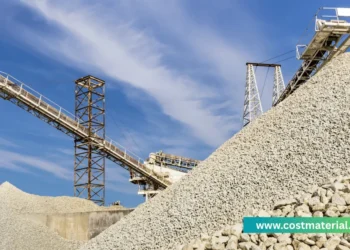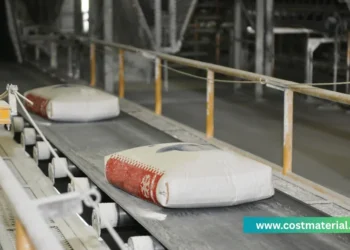Cross bracing is a crucial component in construction, providing stability and reinforcement to structures such as scaffolding, steel frames, and formworks. Whether you’re a contractor, engineer, or DIY builder, knowing the latest 2024 cross bracing price list in the Philippines helps in budgeting and procurement.
What is Cross Bracing? Types, Uses, and Importance in Construction
Cross bracing is a fundamental structural reinforcement technique used in construction to enhance stability, resist lateral forces, and prevent collapse in buildings, scaffolding, bridges, and towers. It consists of diagonal supports—typically made of steel, aluminum, or wood—arranged in an “X” pattern between vertical and horizontal structural members. This design effectively distributes stress, reduces sway, and improves load-bearing capacity, making it indispensable in modern engineering.
Types of Cross Bracing
Steel Cross Bracing – The most common type, made from mild steel, galvanized steel, or stainless steel. Used in high-rise buildings, industrial structures, and scaffolding due to its strength and durability.
Aluminum Cross Bracing – Lightweight and corrosion-resistant, ideal for temporary structures, stages, and lightweight framing where portability is key.
Wooden Cross Bracing – Often used in residential construction and temporary formworks due to its affordability, though less durable than metal alternatives.
Cable Cross Bracing – Uses high-tension steel cables, common in bridges and seismic-resistant structures for flexibility and vibration control.
Knee Bracing – A shorter diagonal support used in wooden trusses and roof frames to reinforce joints without obstructing space.
Key Uses of Cross Bracing
Scaffolding Stability – Prevents scaffolding from collapsing under heavy loads or wind pressure.
Earthquake Resistance – Helps buildings withstand seismic movements by absorbing and redistributing lateral forces.
Steel Frame Reinforcement – Used in warehouses, factories, and skyscrapers to prevent structural deformation.
Roof and Wall Support – Strengthens timber-framed houses and industrial sheds against wind uplift.
Temporary Structures – Essential for event stages, exhibition booths, and construction hoardings to ensure safety.
Why is Cross Bracing Important?
Prevents Structural Failure – Without proper bracing, buildings are vulnerable to buckling, twisting, or collapse under pressure.
Cost-Effective Reinforcement – Compared to solid walls or thicker beams, cross bracing provides high strength with minimal material cost.
Flexibility in Design – Allows architects to create open, column-free spaces (e.g., large halls, stadiums) while maintaining stability.
Wind and Earthquake Protection – Diagonal bracing dissipates energy from lateral forces, reducing damage in extreme weather.
Easy Installation & Adjustability – Unlike rigid supports, some cross braces (like adjustable steel types) can be modified on-site for different needs.
Cross bracing is a simple yet powerful engineering solution that enhances structural integrity across various construction projects. Whether you’re building a skyscraper, reinforcing a warehouse, or setting up temporary scaffolding, choosing the right type of bracing—steel, aluminum, or cable—can mean the difference between a sturdy structure and a hazardous one. For long-term durability, galvanized or stainless steel bracing is recommended, while wood or aluminum may suffice for short-term applications.
Factors Affecting Cross Bracing Prices
Material Type – Steel is cheaper than aluminum, while stainless steel is the most expensive.
Thickness & Size – Longer and thicker bracing costs more.
Supplier & Location – Metro Manila prices may differ from provincial rates.
Galvanization – Rust-resistant coatings increase durability but add cost.
Market Demand – Steel price fluctuations (global market impact).
Cross Bracing Price List 2024 in the Philippines
Here’s an updated breakdown of cross bracing costs based on material type, size, and supplier:
| Specification | Unit | Price (PHP) |
|---|---|---|
| Steel Cross Bracing (Angles, 50x50x3mm, Mild Steel) | per set | 1,500 - 3,000 |
| Adjustable Steel Cross Bracing (Galvanized, 1.5m length) | per piece | 800 - 1,500 |
| Diagonal Cross Bracing (Steel Pipe, 1" diameter) | per set | 2,000 - 4,000 |
| Tubular Steel Scaffolding Bracing (2m length) | per piece | 1,200 - 2,500 |
| Aluminum Cross Bracing (Lightweight, 1.8m) | per set | 3,000 - 5,000 |
| Heavy-Duty Steel Cross Bracing (for Formwork, 2.4m) | per set | 2,500 - 4,500 |
| Prefabricated Cross Bracing (Modular Scaffolding System) | per set | 5,000 - 8,000 |
| Wooden Cross Bracing (Temporary, 2x4 lumber) | per set | 500 - 1,200 |
| Stainless Steel Cross Bracing (316 Grade, 25x25mm) | per set | 4,000 - 7,000 |
| Cross Bracing Installation Labor Cost | per day | 800 - 1,500 (per worker) |
Need an Excel copy of this table? Download here
It’s important to understand what factors influence the unit prices provided. Below is a breakdown of inclusions, exclusions, and key considerations to help you interpret the data accurately.
1. Inclusions in the Unit Price
The prices listed in the table generally cover the following:
✅ Material Cost – The base price of the cross bracing (steel, aluminum, galvanized, etc.).
✅ Standard Sizes – Prices are based on common dimensions (e.g., 50x50x3mm steel angles, 1.5m length).
✅ Basic Galvanization (if applicable) – Some steel bracing includes anti-rust coating.
✅ Local Supplier Markup – Prices reflect retail rates from hardware stores and construction suppliers.
2. Exclusions (What’s Not Covered in the Price)
The listed prices do not automatically include the following unless specified:
❌ Delivery Fees – Transportation costs depend on location (Metro Manila vs. provincial rates).
❌ Taxes & Custom Duties – VAT (12%) may apply for commercial purchases.
❌ Installation Labor – Unless specified, labor costs are separate (see last row of the table).
❌ Custom Fabrication – Special sizes or reinforced bracing may cost extra.
❌ Scaffolding Rental (if applicable) – Some modular systems are rented, not sold.
3. Key Considerations When Using This Price List
A. Price Fluctuations
Steel prices change frequently due to global market trends (e.g., import costs, demand).
Galvanized and stainless steel may have higher but more stable pricing.
B. Bulk Discounts
Contractors buying in bulk (e.g., 10+ sets) can negotiate 5–15% discounts from suppliers.
C. Quality & Durability
Cheaper bracing (PHP 500–1,500/set) may be mild steel (prone to rust).
Galvanized/Aluminum (PHP 2,000+) lasts longer in humid climates.
D. Regional Price Differences
Metro Manila prices may be 10–20% higher than provincial rates due to logistics.
Visayas/Mindanao might have different supplier availability.
E. Alternative Materials
Wooden bracing (PHP 500–1,200) is cheap but not for long-term use.
Stainless steel (PHP 4,000+) is for high-end projects (e.g., coastal structures).
Final Reminder
🔹 Always confirm prices with suppliers before purchasing.
🔹 Check warranties (some galvanized bracing has 1–5 year anti-rust guarantees).
🔹 Compare labor costs—some contractors include installation, others charge separately.
Did you find this blog post helpful? Share it with fellow others! For more construction material price lists, check our other blogs.





